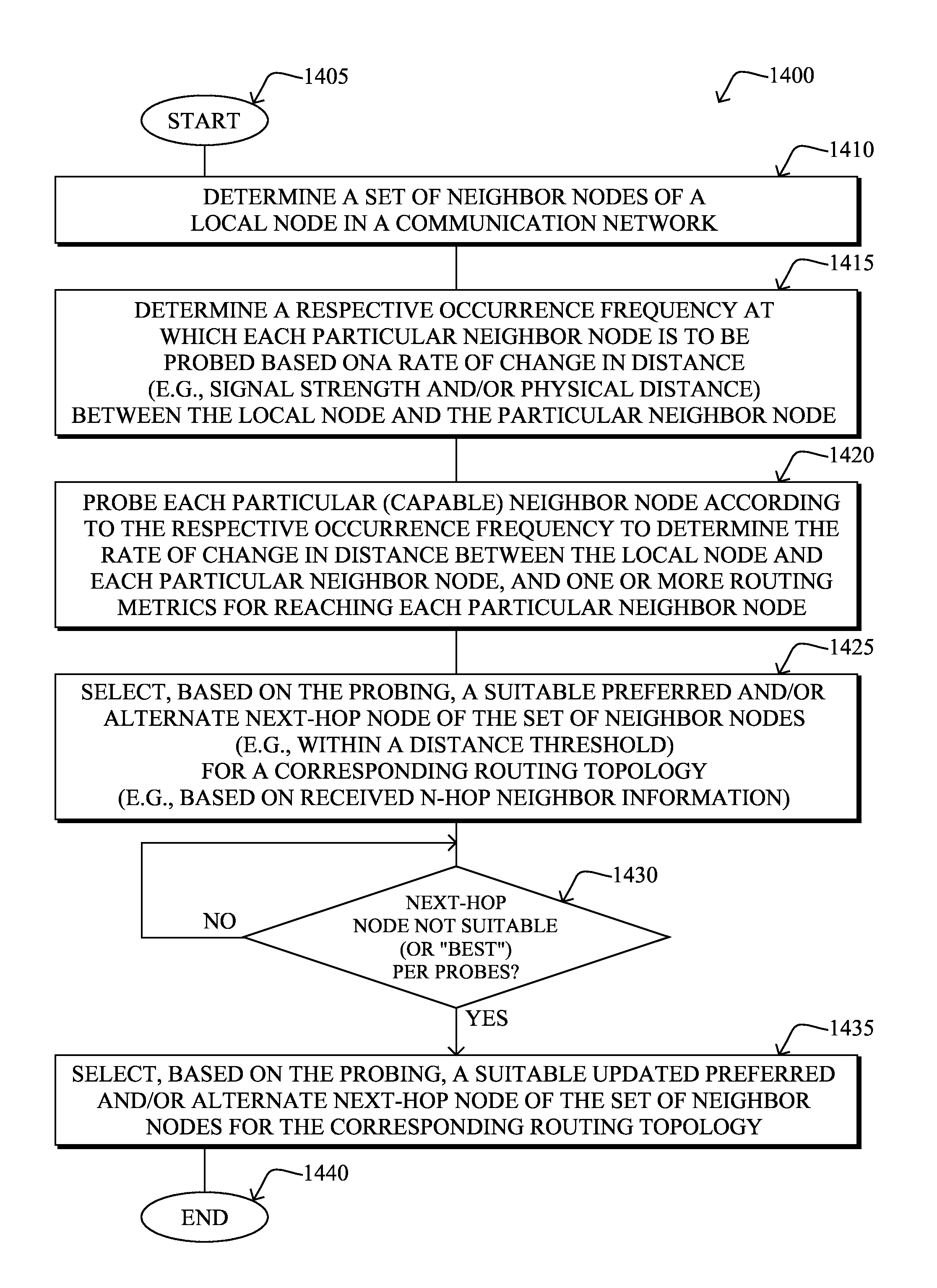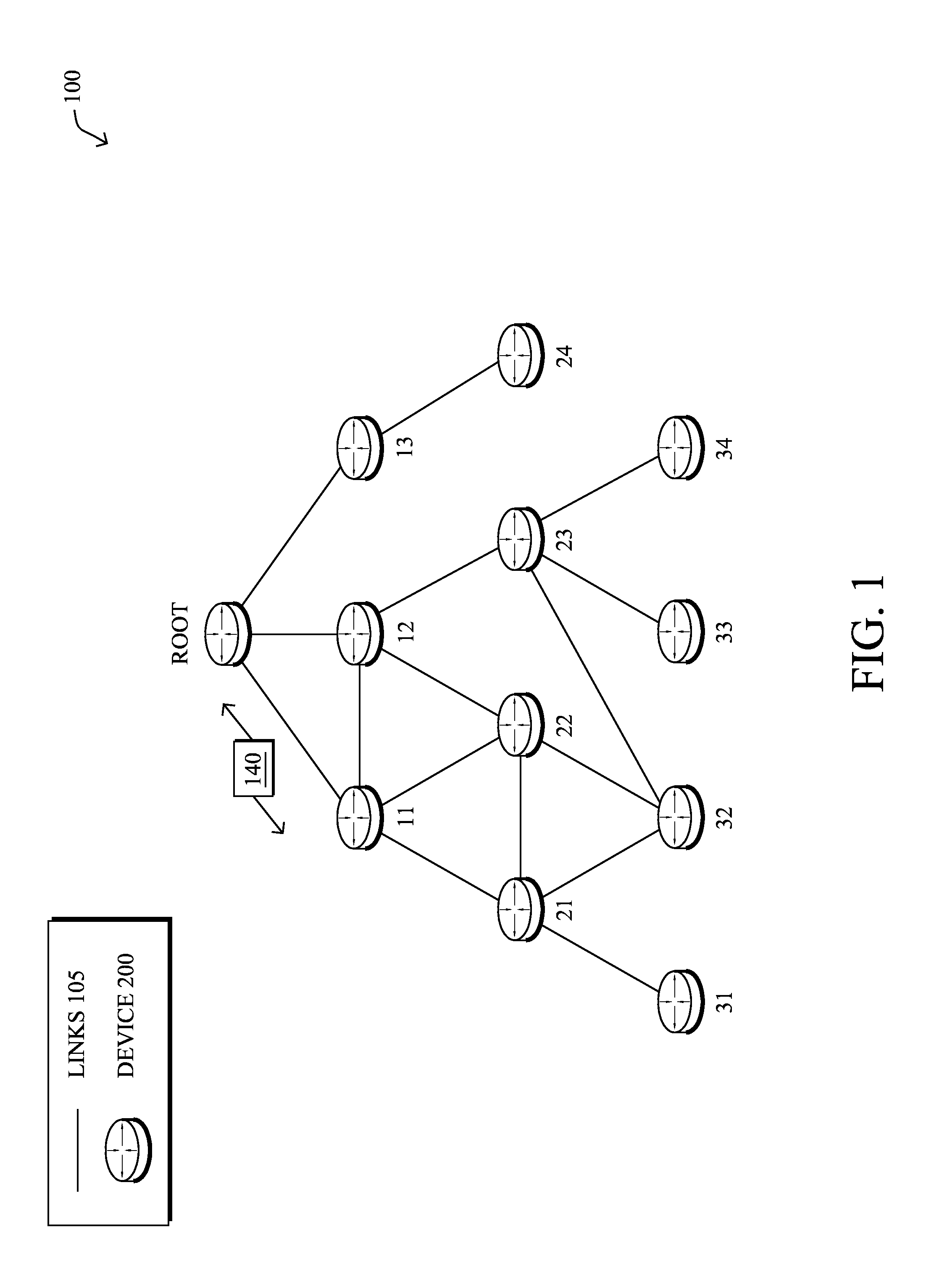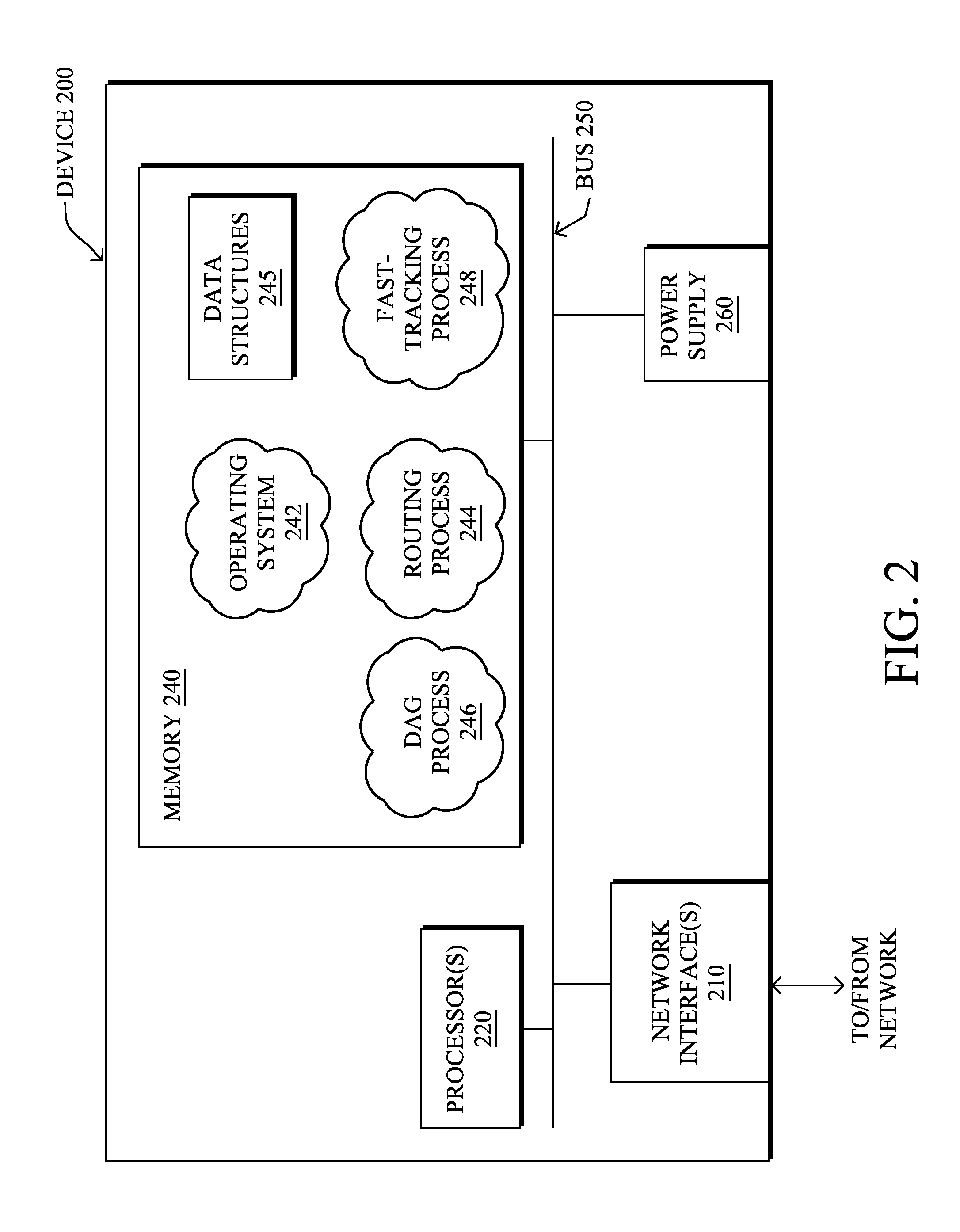Fast-tracking approach for building routing topologies in fast-moving networks
a topology and network technology, applied in the field of computer networks, can solve the problems of insufficient attention of drivers, inability to efficiently maintain connectivity in highly mobile (fast-moving) networks such as vanets, and inability to respect safe distance and reasonable speeds
- Summary
- Abstract
- Description
- Claims
- Application Information
AI Technical Summary
Benefits of technology
Problems solved by technology
Method used
Image
Examples
Embodiment Construction
Overview
[0020]According to one or more embodiments of the disclosure, a local node in a communication network determines a set of its neighbor nodes, and determines a respective occurrence frequency at which each particular neighbor node is to be probed based on a rate of change in distance between the local node and the particular neighbor node. The local node may then probe each particular neighbor node according to the respective occurrence frequency to determine the rate of change in distance between the local node and each particular neighbor node, and one or more routing metrics for reaching each particular neighbor node. As such, the local node may select, based on the probing, a suitable preferred next-hop node of the set of neighbor nodes for a corresponding routing topology.
Description
[0021]A computer network is a geographically distributed collection of nodes interconnected by communication links and segments for transporting data between end nodes, such as personal compu...
PUM
 Login to View More
Login to View More Abstract
Description
Claims
Application Information
 Login to View More
Login to View More - R&D
- Intellectual Property
- Life Sciences
- Materials
- Tech Scout
- Unparalleled Data Quality
- Higher Quality Content
- 60% Fewer Hallucinations
Browse by: Latest US Patents, China's latest patents, Technical Efficacy Thesaurus, Application Domain, Technology Topic, Popular Technical Reports.
© 2025 PatSnap. All rights reserved.Legal|Privacy policy|Modern Slavery Act Transparency Statement|Sitemap|About US| Contact US: help@patsnap.com



